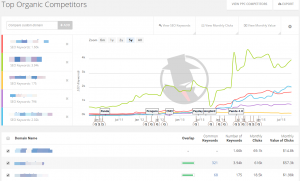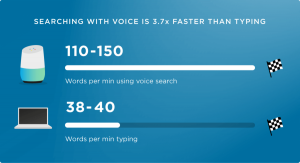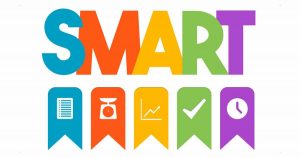 As the Digital Era continues to progress, social and digital technologies will become more fully integrated into not just the work we do, but how we do it. Although external applications such as marketing, sales, and customer service have dominated adoption activities and discussions to date (particularly in the context of consumer goods and services), they are basically the tip of the iceberg. Ultimately the largest and most extensive applications of social and digital technologies will be inside and between organizations. These technologies will be used to enhance just about every aspect of organizational functioning, including knowledge management and innovation, internal and inter-organizational communication, business intelligence, project management, learning, and human capital management.
As the Digital Era continues to progress, social and digital technologies will become more fully integrated into not just the work we do, but how we do it. Although external applications such as marketing, sales, and customer service have dominated adoption activities and discussions to date (particularly in the context of consumer goods and services), they are basically the tip of the iceberg. Ultimately the largest and most extensive applications of social and digital technologies will be inside and between organizations. These technologies will be used to enhance just about every aspect of organizational functioning, including knowledge management and innovation, internal and inter-organizational communication, business intelligence, project management, learning, and human capital management.
As new technologies become more fully integrated into everyone’s jobs, regardless of their functional focus or organizational status, there’s an increasing need for all workers to be digitally literate and competent. So are we? For the most part, no. But with the right commitments and actions from organizations and organizational leaders, as well as ourselves, we can begin to bridge the new Digital Divide, increase our current capabilities, and lay a foundation for ongoing growth and development.
The New Digital Divide: (Il)Literacy
As digital technologies continue to improve, get less expensive and grow more widespread, a new Digital Divide is growing. This divide isn’t based on traditional factors such as geography and socioeconomic status, however: it is based on knowledge and use. In spite of the fact that we’re decades into the Digital Era, most of us (especially senior professionals and organizational leaders) lack the knowledge, skills, and abilities – not to mention attitudes – necessary to effectively address both the opportunities and challenges new technologies present. Our deficiencies are exacerbated by two tendencies:
- Overestimating our own capabilities (i.e., we don’t know what we don’t know – but we think we do)
- Disdaining and/or dismissing the capabilities we know we lack
For the past several decades people have been able to get away with having limited or poor digital skills, for a host of reasons. First, for most organizations digital technology has not been a strategic priority (let alone necessity). In addition, technology applications have traditionally been relatively specific, limited in scope and with relatively small numbers of users. And perhaps most importantly, because of our collective tendency to neglect that fact that technology adoption and adaptation are fundamentally human endeavors, we’ve allowed technology to get ahead of the humans and human systems needed to support them. When everything is in flux and everyone seems to be in a constant state of learning, we accept (albeit grudgingly and with a fair bit of grumbling) people’s ignorance, inefficiency, and mistakes.
But we can’t expect this to continue indefinitely. The degree of tolerance and patience for individuals who aren’t keeping pace with technology will eventually – and perhaps even dramatically – decline as the negative impact of digital illiteracy is felt more keenly in organizations through things like revenue and market share losses, operational inefficiencies, stagnation, and the exodus of top talent (this recent example from IBM doesn’t illustrate the best approach to helping workers increase their digital competencies, but it does reinforce how strategically important a digitally competent workforce is). Rather than naively hoping that digital illiteracy will somehow cure itself, we need to be more proactive about addressing and closing this growing Digital Divide.
Helping individuals and organizations increase their digital literacy and competencies has become a core focus of the work I do since I first started thinking about the issue in early 2011. Here are some ideas for what can be done by organizations and their leaders to increase the digital competency of their workforces, as well as some actions that should be taken by individuals themselves.
Organizations: No More LIY
For too long we’ve been operating with what I call an LIY (Learn It Yourself) approach to social and digital technologies. This approach has generally been ineffective (e.g., most people still don’t know how to use traditional tools like Microsoft Office products, email or the internet itself at more than a basic level), and it’s even less ideal when it comes to the more sophisticated and powerful tools now available to us. Our collective suboptimization is going from bad to worse.
Organizations need to stop deceiving themselves (and their employees) into believing that an LIY approach to developing digital literacy is a viable strategy. People need help to climb their learning curves efficiently and effectively – and providing that help in both structured and unstructured ways is a critical investment that will pay dividends in both the short term and over time. A paradoxical reality of the Digital Era is that we need to teach people how to learn, in new ways and using new tools. We have to stop thinking about technology education and training as an (unnecessary) expense once people finish their formal education.
It’s also important to remember that the required training should not just focus on the literal aspects of how to use specific tools and platforms. Rather, there needs to be an emphasis on understanding the underlying logic behind new technologies (e.g., what is a discussion thread, what do hyperlink codes tell us) and developing transferable skills that can be used across a wide range of platforms (e.g., html basics).
Finally, in addition to training focused on knowledge and skills related to digital tools and technologies, training related to tactics and governance, as well as education regarding key concepts and managerial issues, are also critical to Digital Era success.
For more of my thinking on this topic, check out Digital Literacy: Helping Learners Learn in the Digital Era.
Leaders: Walk the Digital Era Talk
I commend business leaders who recognize the value in leveraging new digital technologies to enable their employees to work more efficiently and effectively. This type of Digital Era leadership, however, is still rare. Most leaders do not understand the potential power and uses of new technologies – or how important it is to educate themselves about both their applications and implications (both external and internal).
Among other things, leaders need to:
- Make the increased use of digital technologies a strategic and operational priority
- Support the creation and adoption of new tools and technologies
- Develop good governance rules and processes for leveraging new tools and technologies to ensure their efficiency and effectiveness are maximized
- Allocate necessary resources (both money and time) to enable employees to learn and use new social and digital tools effectively
- Increase their own digital competencies and demonstrate their commitment by maximizing the use of new technologies themselves
Individuals: Digital Illiteracy is Not Okay
It perplexes me why anyone would think it’s okay to be digitally illiterate, let alone present it as a point of pride. But I continue to see otherwise educated and accomplished professionals proclaim and demonstrate their ignorance with no apparent sense of shame (see, for example, this essay from a surgeon). Being digitally illiterate should be considered this era’s equivalent of being un(der)educated, and having poor interpersonal skills, bad personal hygiene, and sub-par professional standards. It makes people look ignorant and unpolished. It undermines their professional identities and could lead to people taking them and their ideas less seriously. Many of the comments to the surgeon’s confessional illustrate this.
An extension of the idea that digital illiteracy is somehow okay is the notion it’s not a deficiency that needs to be addressed. To date very few of us have made a strong and consistent commitment to increase and enhance our digital competencies. Many claim not to have the time, and/or act as if being savvy about digital technology is somehow beneath us. Some of us think we can get a pass because we’re not “digital natives.”
But as I noted earlier, what we don’t know CAN hurt us, as the degree of tolerance and patience for individuals who aren’t keeping pace with technology will eventually – and perhaps even dramatically – decline. Rather than waiting for a career crisis, shouldn’t we start to prepare ourselves for the inevitable?
We certainly need support from the organizations of which we’re a part, as well as the leaders of those organizations, to create and maintain environments that enable us to develop and enhance our digital literacy, but we shouldn’t rely on that exclusively. Instead, we can all benefit from adopting new mental models and developing and implementing personal action plans.
Adopting a New Mental Model
Our new mental model for communicating and collaborating with others should be inclusive and holistic. Digital communication should not be viewed as an adjunct to other communication forms; rather, it should be fully integrated into the ways in which we connect with others. We should rely on ALL forms of media – both traditional and new – to achieve our goals and enhance our experiences. Flexibility and adaptability should be considered better markers of digital literacy than voracious consumption of new technologies.
We must also recognize that at a fundamental level, digital technology doesn’t dramatically alter what we do, but it does give us “new tools for doing old things.” The idea isn’t to use the new tools just because they’re shinier and everyone else seems to love them. We should use them because they allow us to accomplish things in better ways by enabling us to access a wider range of (more current) information, minimizing bulk, reducing paper production, etc. In other words, digital technology can increase both efficiency and effectiveness.
We must understand and employ a “right tool for the task” approach to communicating. Have a quick message to communicate (e.g., “be there in 5″ or “what time is the meeting?”)? Use texting, instant messaging, or a chat tool. Want to collect input on an issue that needs to be addressed or decision that needs to be made? Start a discussion thread via a shared communication platform. Need to have a discussion with one or more individuals in real time? Use the phone or meet in person. Is the subject complex, sensitive, or difficult? Meet in person if possible.
We should embrace the idea that the more we all engage with digital technologies, the more everyone benefits. Technology isn’t a cure-all and there are certainly challenges, but the positives far outweigh the negatives. Costs and risks are inevitable, but they shouldn’t be used as an excuse to avoid progress.
Finally, we must accept that the over-reliance on the distinction between “digital natives” and “digital immigrants” is counter-productive. Fluency is a state of mind, not a factor of chronological age. Technology doesn’t care how old you are. Anyone can be as digitally sophisticated as they choose to be.
Developing and Implementing a Personal Action Plan
The key to this action plan is making time to become more digitally aware, literate, and active. No one is ever going to find the time. Fire-fighting and short-term demands are always going to be a demanding distraction. We must carve out time each week (ideally, daily) to focus on non-urgent but critically important digital technology-related issues and tasks.
We must educate ourselves, both conceptually and tactically. That means understanding digital technology trends and issues at a high level, paying attention to how seemingly disparate topics are in fact connected, and experimenting with specific tools and technologies sufficiently to have a basic idea of how they work.
We have to focus on digital engagement that has true strategic value. Irrationally jumping on digital technology bandwagons is a waste of time, effort, and resources. Technology should not be a solution in search of a problem. The key is to know what our objectives are and then determine the best strategies and tactics for achieving them.
We must make digital engagement a tactical priority. If being more digitally engaged has strategic value, then the associated tactics have to be made a priority. They can’t simply be layered on top of existing practices, and they can’t be constantly relegated to the back burner. They must be integrated into our activities efficiently and effectively.
We should commit to learning at least one new digital concept or trick each week. Each of us should develop a list of things we need/want to learn, find the necessary resources, and then learn and apply the knowledge/skill. We should take a crawl-walk-run approach to our growth by keeping the things on the list simple and manageable (e.g., how to hyperlink text, how to embed a video, what a hashtag is/does, what a discussion thread is).
We should be willing to pay for courses and/or employ the services of a digital coach or mentor to help us climb our learning curves faster and better, and to help us tackle more complex subjects. No use trying to educate ourselves on our own if leveraging someone else’s expertise is a smarter way to get us where we want to be. Afraid of being embarrassed or looking stupid? Get over it. Persistent ignorance and ineptitude are far more damaging than admitting you don’t know something and need help. And a good teacher will never make you feel bad for the knowledge and skills you lack.
We have to commit ourselves to developing better digital habits. Everyone can learn how to work with the digital tools at their disposal more efficiently and effectively, including (and especially) email and Office products. We can learn from what others do when we’re working side-by-side. We can ask friends and colleagues for their favorite time-saving tips and tricks, and have them show us what they do and how.
Finally, those of us who are more digitally literate and sophisticated can help others learn and grow by being champions and cheerleaders, leading by example, and offering guidance, instruction, and encouragement.
Your Thoughts?
As always, I welcome your feedback. What questions has this piece raised for you? What would you add to, change, or delete from the recommendations provided?
This essay was previously published by The Denovati Group.
(270)
Report Post




